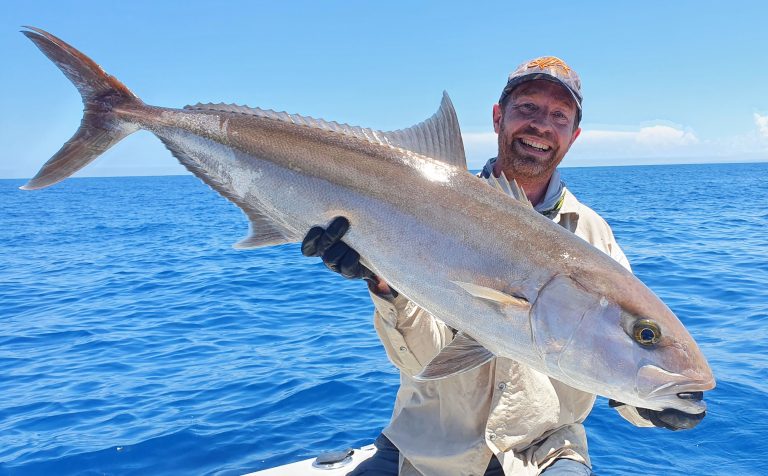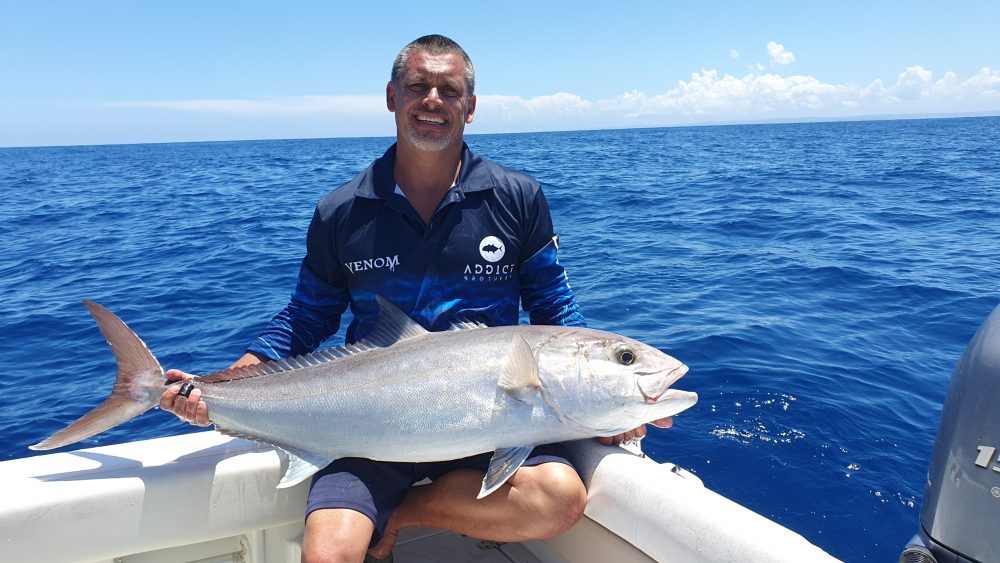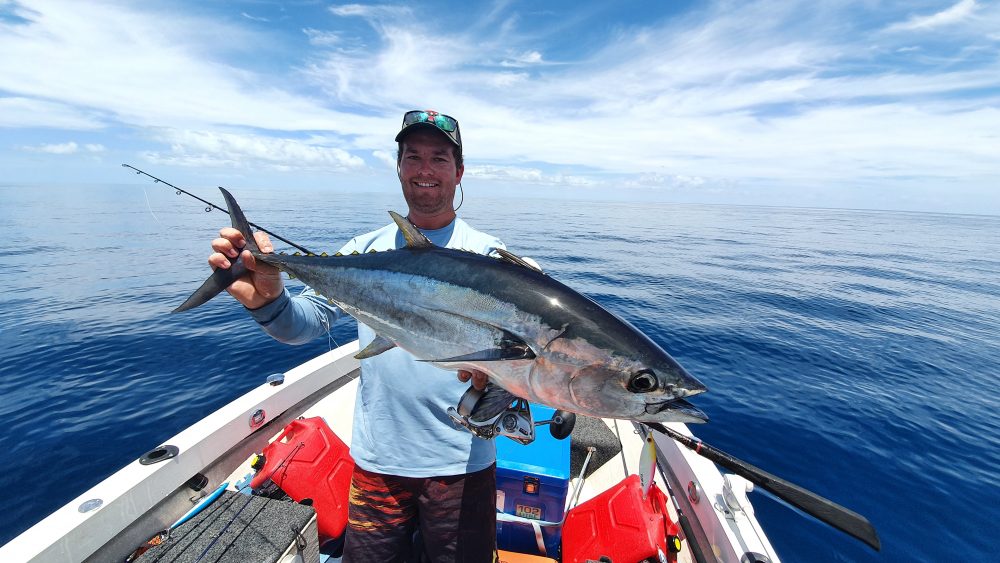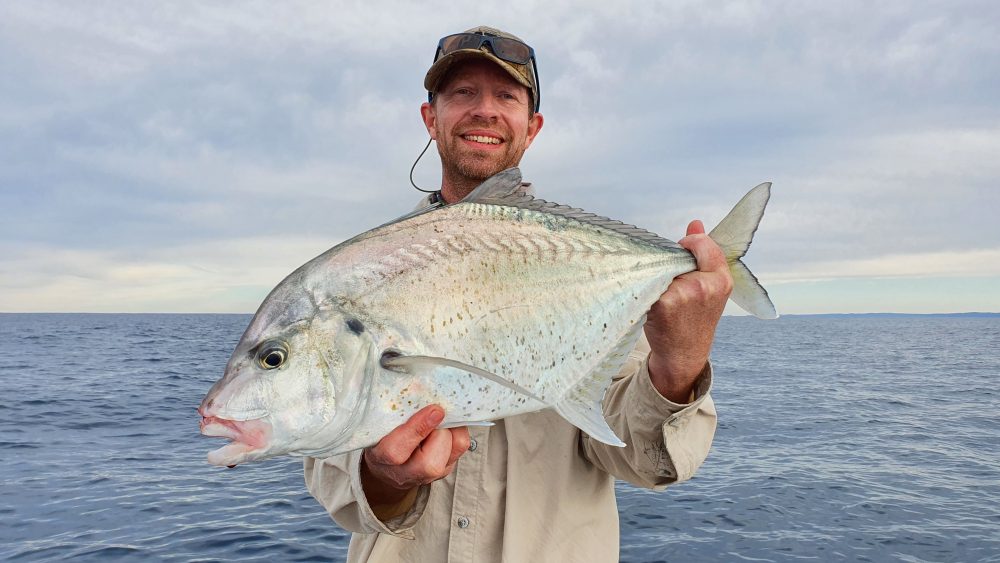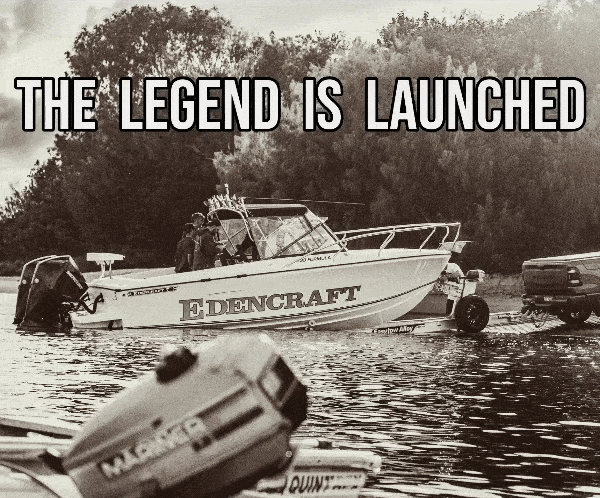A Guide to Metal – By Grant Budd
During most lure anglers’ lives they often try new techniques while aiming to tick off a prized bucket list species. All too often this results in travel to a new destination and the great excuse to purchase all the must-have gear to achieve such a goal.
While working in the industry, I have seen year after year many established saltwater anglers try jigging. The most popular being slow pitch as it can produce a huge array of reef species. For SEQ anglers, snapper, coral trout, sweetlip, and pearl perch are the more common targets. Other species that will take a well-presented jig include big cobia, jewfish and cod if you can stop them!
Slow pitch jigs are designed to fall or flutter during descent and be worked slowly.
The term “pitch” refers to the turning of the reel handle. Simply put, one pitch is one full rotation and half pitch is half a turn of the reel handle. As the name suggests it is done slowly.
I meet a lot of anglers who watch YouTube videos of jiggers in Asia. These anglers often fish in 100+ metres of water with high current, light PE2 braids, big jigs and the very best overhead reels and parabolic rods from Evergreen. The simple act of turning the reel handle causes the rod tip to bend against the weight of the jig which then causes the tip to finally unload and work the jig. The height of the water column worked can be as little as a few metres making it a more relaxed and popular style.
For many local anglers 40-60 metres is their max depth on the coast and this particular slow pitch technique doesn’t work as well as expected. Many get confused with micro jigs or use underweighted jigs while using rods that max out at over 250 grams. Because of the this the rod fails to load correctly causing the entire process and presentation to fail. This sees a tendency to jerk the rods more to work the underweighted jig. If this is you, try increasing your jigs to 100G + and feel the difference.
From here we have long fall which as the name suggests sees the use of longer slightly narrower or asymmetric jigs. Rods are often longer and bigger lifts of the rod gets the jigs swimming as they have further to fall back to their start position. Often you can put in a partial turn of the reel during the fall to get the jig to settle a little higher from its original start position. Personally I love this technique and have been railed by big fish on light PE2 setups. The Palms Slow Blatt Oval is one of the very best slow jigs as are the narrow and long versions. Shout Shabshab jigs “if” you can find them are a fantastic jig. Storm make some excellent jigs with the Koika and Slow Rocker consistent performers.
I feel that giving the jig time to swim and vibrate gets the bites and most of us know a lot of bites come when our lures are dropping. In this situation PE2-3 is perfect on such fish and these combos can stop huge fish in the hands of an experienced angler.
Touching on PE, many anglers don’t quite understand the term and rightly so, after all what is PE? Over the years since PE, a unit of diameter was used, the jigging scene has exploded. With this, braiding machines and fibre technologies have peaked seeing a new breed of super lines. When PE3 used to mean 30lb it now represents almost 60lb! One thing PE braids all feature is a super high breaking strain for their finished diameter. They are also very circular, braided tightly and most have colour changes at 10-25 metre intervals.
Expensive braids are paramount in deep water where currents are present so expect to pay over $100 for a spool. Thin, round, tightly wound braids cut through current resulting in better contact and presentation of the jig. Colour change or metering is very important and something I use when seeing schooling fish pass though at certain depths. Metering allows the angler to drop down to a specific depth to target fish which saves time and energy. Look at Shimano Ocea, Daiwa Saltiga, YGK jigman and Varivas for quality PE braids. The difference between PE3 and PE5 lines can see an increase of over 100 grams when fishing in 100 metres with current. Reducing line diameter can save you from excess weight and fatigue especially if your target fish don’t require such high breaking strain lines.
When it comes to reels most will try using spin as most have a 3-5000 reel.
Slow pitch is near on impossible with spin. It’s a bit like using soft plastics with mono and fiberglass rods, it simply doesn’t work.
The main reason is fine pitch movements are extremely hard, but overhead reels can turn and stop on a dime allowing you to bring your jig to life. You also have zero line twist to contend with and have the ability to control your drag pressure with your winding hand and thumb. The best reels are Shimano Ocea Jiggers and Daiwa Saltiga with the previously mentioned Evergreen reels reserved for obsessed well off tackle junkies.
The ever popular Tranx 300HG from Shimano and the Daiwa Lexa are great starting points. These reels feature level wind and pack a lot of stopping power. The level wind is omitted from high end reels as it presents a failure point and jigging equipment tends to be very refined. Rates of jig descent can be slower due to the way the line exits the reel but its marginal. Level winds tend to remain in a fixed position when the reel is in free spool or when a fish is taking line. A heavy fish ripping line from a spool could also present micro abrasions to lines over time but I don’t think this has been tested.
The Jigger in the 1500HG and 2000HG sizes have long been flagship reels for many years and rightly so. They are beautiful reels built to last and hold a lot of line. The 1500 fits in the palm of your hand and is a pleasure to fish all day long. The 2000 is bigger and can get heavy, but packs a punch and is a workhorse designed to last for ever. If you are a left hand winder you will have to import your own Jiggers as Shimano Australia fail to recognise left hand anglers. This is a shame given the 1500 and 2000 both come in left hand wind overseas. They did however bring in the new Ocea F-Custom in 1500HG left hand wind so maybe they will bring in the jiggers.
With high speed jigging often looked as something done in New Zealand for oversize 30+kg kingfish and samsons in WA I wondered how it would fair on the coast. Having my jigging obsession firmly in place it was not long until I started to think big. The Ocea Jigger 2000HG is the perfect reel for PE5 setups. Breaking at almost 90lb I have never been able to break this braid so never underestimate PE braids and their breaking capacity.
As for rods the jig market has certainly taken off with options priced at $130 to over $1500 for hand made Japanese works of art. One brand kicking goals are Oceans Legacy who are a relatively new company. Every rod they make just feels right with a great action and a very modest price point.
I purchased my rods before Oceans Legacy were a household name and with Legit Design Blueway jig rods under my arm I found out that jigging 200-300 grams a lot more effort than my 120 gram slow pitch offerings. High speed jigging will take it out of you so be prepared to take an anti inflammatory or two after 8-10 hours of fishing.
When you get into the high speed side of things everything is tested to the max. All too often the fish you target head straight into the reef or back into a wreck.
It is vital you can tie FG or PR knots and have faith in your gear and don’t be afraid to push it to the limit. Second guessing knots, braids and drag settings will see you bricked in seconds.
When speed jigging I like to run 4 metre leaders to give me some shock absorbsion and abrasion resistance. I usually run my 2000HG jigger locked up at 10Kg of drag so only the best Japanese 80-100lb FC leader is used. Should I get sharked I can usually be back in the game without having to tie a new leader.
When it comes to jigs you can spend a fortune or not. With many high end brands hailing from Japan it is easy to drop $45+ on a single jig and that’s without hooks. You can buy many entry level jigs from Samaki, Shimano, Nomad and Daiwa. These jigs are from China and some are very generic in shape and colour so treat yourself to a few expensive jigs to experience the difference. Some come equipped with basic hooks so get rid of them.
When you buy hooks don’t be a tight-arse and use only Decoy, Shout or similar. These are fine in the gauge ensuring maximum hook setting and are super strong. A 30kg fish will expose every weakness. Lastly you should only use the best in split rings, solid rings and PE cord if you are to make your own assist hooks. You can even buy some flash from online fly fishing stores to give them that extra bling.
Lastly a good set of split ring pliers is essential and must be capable of opening your chosen ring size. Shimano Power pliers are my favourite as the braid cutter is great and they are easy to use. Gimbal belts come in a wide range of prices and you get what you pay for. I’m not saying you need to get an MC Works TT belt but when you have a fish trying to pull you overboard a decent belt can really save you. Lastly you will need a jig bag to house all your prized jigs in. This is something I see many companies fail on with inappropriate material use, metal zips, basic storage or layout options. Without a doubt HPA make some of the finest gear available and the Jig King case is built to last. I hold about 12KG of jigs on a good day as well as gloves, leader, rings and around 20 packs of assist hooks. There is nothing worse than seeing all your gear get wet and hooks become rusty.
Jigging can be an obsession and a financial rabbit hole. The possibilities are endless and the more you do it the more you realise one combo simply isn’t enough. The hit on a jig is very addictive, just ensure you are prepared to get your ass handed to you from time to time!


